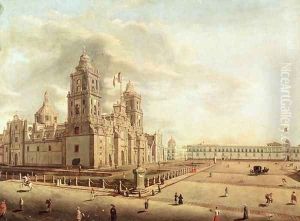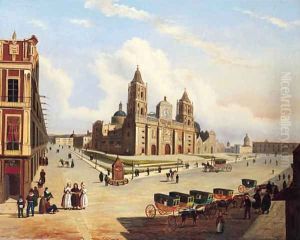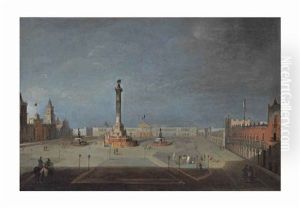Pedro Gualdi Paintings
Pedro Gualdi was a 19th-century Italian-Mexican painter, architect, and scenographer known for his contribution to both Italian and Mexican art. Born in Modena, Italy, in 1806, Gualdi developed his skills in Italy before moving to Mexico.
Gualdi showed artistic promise from a young age and received his initial training in Italy. He was known for his technical precision and his ability to create detailed architectural renderings and scenic backdrops, which were particularly valued in the theatrical world. His work as a scenographer for various theaters in Italy helped him to hone his skills in perspective and composition.
In the 1830s, Gualdi moved to Mexico, a time when the country was in the midst of significant political and social changes following its independence from Spain. Gualdi quickly integrated into the Mexican art scene and began to receive commissions from both the government and private patrons. He is especially remembered for his contributions to the visual documentation of Mexico's urban landscapes and architecture, capturing the transformation of cities like Mexico City during a period of modernization.
His work often blended the accurate representation of architecture with atmospheric elements, which made his paintings not just documents of architectural forms but also expressions of the romantic sensibility of the time. Gualdi's paintings were characterized by their attention to detail, use of light, and clear, vivid colors. They have been important for historians in understanding the urban development of Mexico in the 19th century.
Pedro Gualdi's influence extended beyond his canvases. He was involved in the design and construction of theatrical sets and contributed to various architectural projects, showcasing his versatility as both an artist and an architect. Unfortunately, Gualdi's life was relatively short; he died in Mexico City in 1857. Despite his premature death, Gualdi left a lasting legacy in the realms of painting, architecture, and stage design, and he is remembered as a significant figure in the cultural exchange between Italy and Mexico during the 19th century.


